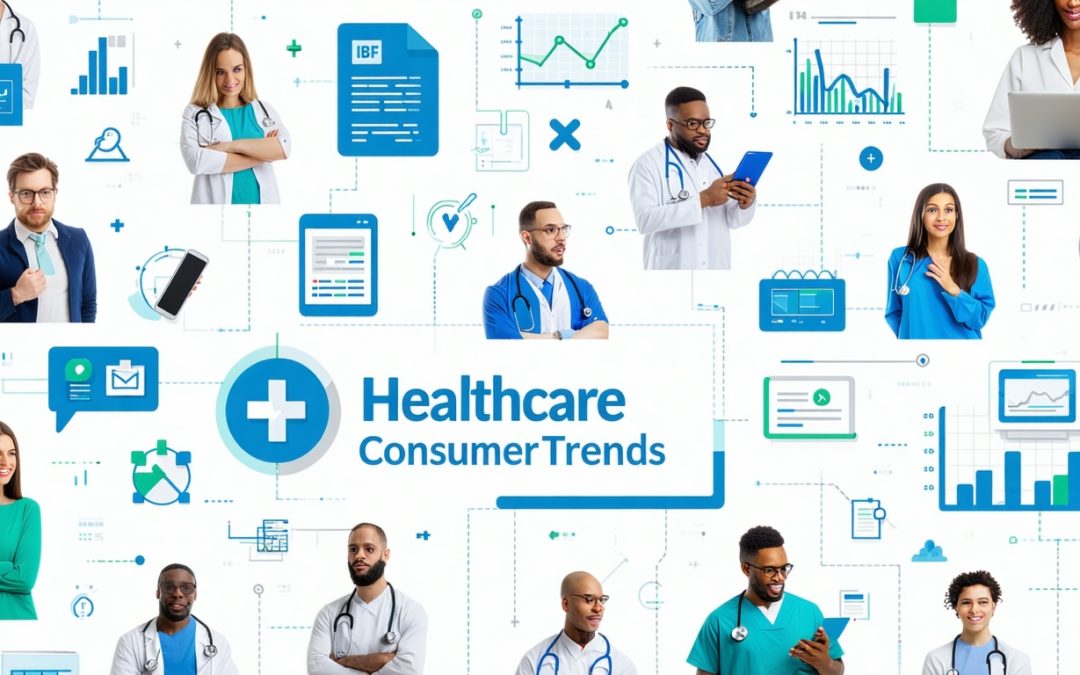The Evolution of Healthcare
The healthcare landscape has undergone significant changes over the years. Understanding these shifts is essential for young professionals considering private healthcare options.
Traditional Healthcare Models
Historically, healthcare systems were primarily based on public models, where services were funded and provided by the government. These traditional models often focused on treating illnesses rather than preventing them. Patients typically had limited choices regarding their healthcare providers and treatment options.
| Feature | Traditional Healthcare Models |
|---|---|
| Funding | Government-funded |
| Focus | Illness treatment |
| Patient Choice | Limited |
| Accessibility | Varies by region |
Shift Towards Private Healthcare
In recent years, there has been a noticeable shift towards private healthcare. This change is driven by several factors, including the desire for more personalized care, shorter wait times, and greater access to advanced medical technologies. Young professionals are increasingly seeking private healthcare options that offer flexibility and tailored services.
| Factor | Impact on Private Healthcare |
|---|---|
| Personalization | Increased demand for customized care |
| Technology | Access to advanced medical solutions |
| Wait Times | Shorter wait periods for services |
| Accessibility | More options for healthcare providers |
This trend reflects a broader movement within the healthcare industry trends, where individuals are prioritizing their health and well-being.
Importance of Staying Informed
As the healthcare landscape continues to evolve, staying informed about emerging trends in the healthcare industry is crucial. Knowledge of new developments can empower young professionals to make informed decisions regarding their healthcare options.
Understanding trends such as telemedicine, personalized medicine, and advancements in healthcare technology can provide valuable insights into the future of healthcare. For more information on these topics, explore our articles on healthcare technology trends and digital health trends.
By keeping abreast of these changes, individuals can better navigate their healthcare journeys and choose the best options for their needs.
Key Emerging Trends
The healthcare industry is undergoing significant changes, driven by various emerging trends that are reshaping how care is delivered. Young professionals considering private healthcare should be aware of these trends to make informed decisions about their health and wellness.
Telemedicine and Virtual Care
Telemedicine has gained immense popularity, especially in recent years. This trend allows patients to consult healthcare providers remotely through video calls, phone calls, or messaging. Telemedicine offers several advantages, including:
- Increased Accessibility: Patients can access care from the comfort of their homes, reducing travel time and costs.
- Convenience: Virtual appointments can be scheduled more flexibly, accommodating busy lifestyles.
- Broader Reach: Specialists can provide care to patients in remote areas who may not have access to certain services.
| Benefits of Telemedicine | Description |
|---|---|
| Accessibility | Care from home, reducing travel needs |
| Convenience | Flexible scheduling for appointments |
| Specialist Access | Reach to remote areas for specialized care |
For more insights on how telemedicine is transforming healthcare, explore our article on healthcare technology trends.
Personalized Medicine and Genomics
Personalized medicine is revolutionizing healthcare by tailoring treatments to individual patients based on their genetic makeup. This approach allows for more effective and targeted therapies, improving patient outcomes. Key aspects of personalized medicine include:
- Genomic Testing: Analyzing a patient’s DNA to identify specific health risks and treatment responses.
- Customized Treatment Plans: Developing therapies that are specifically designed for an individual’s genetic profile.
- Preventive Care: Using genetic information to predict and prevent diseases before they occur.
| Aspects of Personalized Medicine | Description |
|---|---|
| Genomic Testing | Identifying health risks through DNA analysis |
| Customized Plans | Tailored therapies for individual needs |
| Preventive Care | Predicting diseases for early intervention |
To learn more about the advancements in personalized healthcare, check out our article on personalized healthcare trends.
Artificial Intelligence in Healthcare
Artificial intelligence (AI) is becoming increasingly integrated into healthcare systems. AI technologies are being used to enhance various aspects of care, including:
- Data Analysis: AI can process vast amounts of data to identify patterns and trends, aiding in diagnosis and treatment planning.
- Predictive Analytics: By analyzing historical data, AI can predict patient outcomes and potential health risks.
- Automation: Routine tasks, such as scheduling and billing, can be automated, allowing healthcare professionals to focus more on patient care.
| Applications of AI in Healthcare | Description |
|---|---|
| Data Analysis | Identifying patterns for better diagnosis |
| Predictive Analytics | Forecasting patient outcomes and risks |
| Automation | Streamlining administrative tasks |
For further exploration of how AI is shaping the healthcare landscape, visit our article on healthcare innovation trends.
These emerging trends in the healthcare industry are not only enhancing the quality of care but also empowering patients to take control of their health journeys. Young professionals should stay informed about these developments to make educated choices regarding their healthcare options.
Enhancing Patient Experience
The patient experience is a critical aspect of healthcare, especially in the context of private healthcare. Emerging trends in the healthcare industry are significantly improving how patients access care, communicate with providers, and navigate administrative processes.
Improved Access to Care
Access to healthcare services has become more streamlined due to advancements in technology and the rise of telemedicine. Patients can now consult with healthcare professionals from the comfort of their homes, reducing the need for in-person visits. This is particularly beneficial for young professionals who may have busy schedules.
| Access Method | Description | Benefits |
|---|---|---|
| Telemedicine | Virtual consultations via video or phone | Convenience, time-saving |
| Online Scheduling | Book appointments through websites or apps | Flexibility, reduced wait times |
| Mobile Health Apps | Access health information and services on smartphones | Immediate access, user-friendly |
Enhanced Communication Channels
Effective communication between patients and healthcare providers is essential for a positive experience. The integration of digital tools has transformed how patients interact with their healthcare teams. Secure messaging systems, patient portals, and chatbots are becoming common, allowing for quick responses to inquiries and better management of health information.
| Communication Tool | Purpose | Advantages |
|---|---|---|
| Patient Portals | Access medical records and test results | Empowerment, transparency |
| Secure Messaging | Direct communication with providers | Quick responses, convenience |
| Chatbots | Answer common questions and provide information | 24/7 availability, efficiency |
Streamlined Administrative Processes
Administrative tasks can often be a source of frustration for patients. However, emerging trends in healthcare are simplifying these processes. Electronic health records (EHRs) and automated billing systems are reducing paperwork and improving efficiency. This allows healthcare providers to focus more on patient care rather than administrative burdens.
| Administrative Process | Improvement | Impact on Patients |
|---|---|---|
| Electronic Health Records | Centralized patient information | Faster access to data, improved care coordination |
| Automated Billing | Simplified payment processes | Reduced confusion, timely billing |
| Online Forms | Digital completion of paperwork | Time-saving, less hassle |
These enhancements in patient experience are part of the broader healthcare industry trends that are shaping the future of private healthcare. By focusing on access, communication, and administration, the healthcare sector is becoming more patient-centered, ultimately leading to better health outcomes and satisfaction.
Impact on Healthcare Professionals
The emergence of new trends in the healthcare industry is significantly influencing the roles and responsibilities of healthcare professionals. As the landscape evolves, it is essential for these individuals to adapt to the changes and embrace the opportunities that arise.
Changing Roles and Responsibilities
With the shift towards private healthcare and the integration of technology, healthcare professionals are experiencing a transformation in their roles. They are now required to take on additional responsibilities that focus on patient engagement, data management, and technology utilization.
| Role Changes | Description |
|---|---|
| Increased Patient Interaction | Professionals are spending more time engaging with patients to understand their needs and preferences. |
| Data Management | There is a growing emphasis on managing patient data effectively, ensuring privacy and compliance. |
| Technology Integration | Professionals must be proficient in using new technologies to enhance patient care and streamline processes. |
Embracing Technology
The integration of technology in healthcare is reshaping how professionals deliver care. Telemedicine, electronic health records (EHR), and mobile health applications are becoming standard tools in the industry. Healthcare professionals must be comfortable using these technologies to improve patient outcomes and operational efficiency.
| Technology | Benefits |
|---|---|
| Telemedicine | Provides remote access to care, improving convenience for patients. |
| EHR Systems | Enhances data accuracy and accessibility, facilitating better decision-making. |
| Mobile Health Apps | Encourages patient engagement and self-management of health conditions. |
For more insights on how technology is influencing the healthcare sector, refer to our article on healthcare technology trends.
Continuing Education and Training
As the healthcare industry evolves, ongoing education and training are vital for professionals to stay current with emerging trends. Many organizations are offering training programs and workshops focused on new technologies, patient care strategies, and regulatory changes.
| Training Focus | Importance |
|---|---|
| Technology Proficiency | Ensures professionals can effectively use new tools and systems. |
| Patient-Centered Care | Enhances skills in communication and empathy, improving patient satisfaction. |
| Regulatory Compliance | Keeps professionals informed about changes in laws and policies affecting healthcare delivery. |
Healthcare professionals should actively seek opportunities for professional development to remain competitive in the changing landscape. For more information on the latest trends in the healthcare workforce, check out our article on healthcare workforce trends.
The impact of emerging trends in the healthcare industry is profound, requiring professionals to adapt and grow in their roles. By embracing technology and committing to continuous learning, they can enhance their contributions to patient care and the overall healthcare system.
Financial Considerations
Understanding the financial aspects of private healthcare is essential for young professionals considering their options. This section will cover the costs associated with private healthcare, insurance coverage, and the emerging value-based care models.
Cost of Private Healthcare
The cost of private healthcare can vary significantly based on several factors, including the type of services required, the provider, and the geographical location. Below is a table that outlines average costs for common healthcare services in private settings.
| Service | Average Cost |
|---|---|
| General Practitioner Visit | $100 – $300 |
| Specialist Consultation | $150 – $500 |
| Diagnostic Tests (e.g., MRI) | $400 – $3,500 |
| Surgical Procedures | $1,500 – $100,000 |
These costs can be a significant consideration for young professionals. Understanding the potential expenses can help in making informed decisions about healthcare options. For more insights into the financial aspects of healthcare, refer to our article on healthcare cost trends.
Insurance Coverage
Insurance coverage plays a crucial role in managing healthcare expenses. Many private healthcare providers offer various insurance plans that can help offset costs. It is important for individuals to review the details of their insurance policies, including coverage limits, deductibles, and co-pays.
| Insurance Type | Coverage Details |
|---|---|
| HMO (Health Maintenance Organization) | Requires referrals for specialists, lower premiums |
| PPO (Preferred Provider Organization) | More flexibility in choosing providers, higher premiums |
| EPO (Exclusive Provider Organization) | No referrals needed, but limited to network providers |
Understanding the differences between these insurance types can help young professionals select a plan that best fits their healthcare needs. For more information on insurance trends, check out our article on healthcare insurance trends.
Value-Based Care Models
Value-based care models are gaining traction in the healthcare industry. These models focus on providing high-quality care while controlling costs. Instead of paying for each service rendered, providers are compensated based on patient outcomes and satisfaction.
| Key Features | Description |
|---|---|
| Patient-Centered Care | Emphasizes the needs and preferences of patients |
| Quality Metrics | Providers are evaluated based on patient health outcomes |
| Cost Efficiency | Encourages providers to deliver care in a cost-effective manner |
This approach aims to improve the overall patient experience while reducing unnecessary healthcare spending. For further exploration of healthcare trends, consider reading our article on healthcare delivery trends.
By understanding the financial considerations of private healthcare, young professionals can make informed choices that align with their health needs and financial situations.
Looking Ahead
The healthcare landscape is continuously evolving, influenced by various emerging trends that shape the way care is delivered. Young professionals considering private healthcare should be aware of these trends to make informed decisions about their health and wellness.
Future Trends in Healthcare
Several key trends are expected to dominate the healthcare industry in the coming years. These include advancements in technology, shifts in patient expectations, and changes in regulatory frameworks.
| Trend | Description |
|---|---|
| Telehealth Expansion | Increased use of virtual consultations and remote monitoring tools. |
| Personalized Medicine | Tailoring treatments based on individual genetic profiles. |
| AI Integration | Utilizing artificial intelligence for diagnostics and patient management. |
| Value-Based Care | Focusing on patient outcomes rather than the volume of services provided. |
For more insights on these trends, refer to our article on healthcare industry trends.
Adapting to Change
Healthcare providers and organizations must adapt to these emerging trends to remain competitive and effective. This involves embracing new technologies, revising care delivery models, and enhancing patient engagement strategies.
| Adaptation Strategy | Description |
|---|---|
| Training and Development | Continuous education for healthcare professionals on new technologies. |
| Infrastructure Investment | Upgrading facilities to support telehealth and digital health solutions. |
| Patient-Centric Approaches | Focusing on the needs and preferences of patients in care delivery. |
Organizations that successfully adapt will likely see improved patient satisfaction and better health outcomes. For more information on how technology is influencing healthcare, check out our article on healthcare technology trends.
Empowering Patients in Their Healthcare Journeys
Empowering patients is a crucial aspect of the evolving healthcare landscape. As patients become more informed and engaged, they expect to play an active role in their healthcare decisions.
| Empowerment Strategy | Description |
|---|---|
| Access to Information | Providing patients with easy access to their health data and treatment options. |
| Shared Decision-Making | Involving patients in discussions about their care plans. |
| Support Resources | Offering tools and resources to help patients manage their health effectively. |
By focusing on patient empowerment, healthcare providers can foster a collaborative environment that enhances the overall patient experience. For insights into consumer behavior in healthcare, refer to our article on healthcare consumer trends.
Understanding these future trends, adapting to changes, and empowering patients will be essential for young professionals navigating the private healthcare landscape.












0 Comments